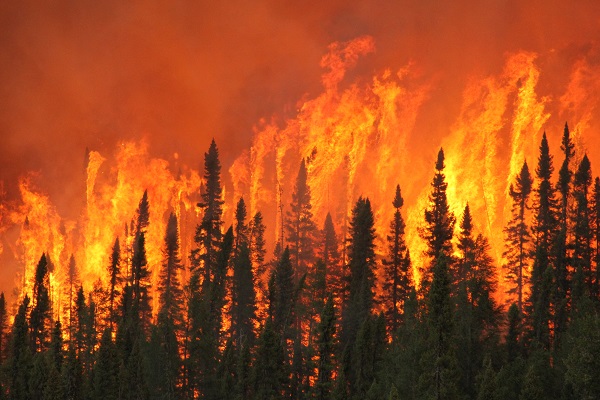
Industrial Operations Protocol guidance from Ministry of Natural Resources and Forestry
Industrial Operations Protocol for Prevention of Wildfire – Ministry of Natural Resources and Forestry
With the increasing number of wildfires, industrial employers need to know about a fire prevention law that came into effect in Ontario in 2016.
Fire prevention regulation for Ontario industries
Industrial operations in forest areas constitute a significant risk of wildland fire. The risk includes fire and smoke that threaten the safety of the industrial operation, their staff, surrounding communities, wildlife, infrastructure such as power lines and travel corridors, and commercial forest licenses.
In order to minimize the number and impact of wildland fires caused by industrial operations, the Ministry of Natural Resources and Forestry (MNRF) updated Ontario Regulation 207/96 Outdoor Fires under the Forest Fires Prevention Act to specifically include industries such as mining, electrical power generation, railways, and utilities.
The regulation identifies the responsibilities of industrial operators in sharing the Ministry’s objectives of preventing and mitigating the effects of wildland fire in Ontario forests. To that end, Ontario forestry and logging operations have long since had their own protocol with the MNRF.
The significance of the legislation is that industries, especially those working in remote northern Ontario locations, need to regularly evaluate their operations and activities for fire risk, in addition to having fire prevention plans, training, and equipment in place.
The regulatory changes amending Ontario Regulation 207/96 under the Forest Fires Prevention Act provide direction for the prevention and suppression of wildland fires in forest areas within the fire regions during the fire season, normally April 1 to October 31.
Regulations help ensure:
-
Industrial operations are conducted in a manner that prevents wildland fires from starting
-
Wildland fires are detected and reported to MNRF so it receives a timely response
-
Industrial operators are able to continue to work safely and as long as possible, as the risk of fire increases
-
Employees are adequately trained to use available equipment to take safe action that will reduce the negative impact or damage from a fire, should one occur
Regulatory requirements for industrial operations within forest areas:
-
Development of a Fire Prevention and Preparedness Plan which includes contacts at the company who are responsible for wildland fire prevention and suppression activities, fire prevention measures put in place, available fire suppression equipment and training levels for staff who may need to respond to wildland fire ignitions.
-
Preparedness activities include having firefighting equipment and trained staff on hand to take immediate action on small fires ignited by industrial operations, or occur near industrial operations, to reduce their spread.
-
Modifications and/or mitigation actions are required as the risk of wildland fire ignition and spread increases.
-
Mitigation actions are required for maintaining the vegetation on industrial rights-of-way (e.g., power lines, railways, to reduce the risk of starting wildland fires).
The MNRF has created a special document Industrial Operations Protocol to provide direction and supplemental information in support of the regulation, including how to prevent industry-caused wildfires and expedite the suppression of any fire on or near industrial worksites in forested areas.
The Ministry has also created a Fire Intensity Codes website that provides links to additional resources such as the Forest Fire Prevention Act, Outdoor Fires Regulation, Fire Management Offices.
View current forest fire information in Ontario posted on a map by the MNRF.
Resources
Industrial Operations Protocol - MNRF
Modifying Industrial Operations Protocol for Forestry Sector - MNRF
Wildfire safety tips at home and at work: How to stay safe - WSN
